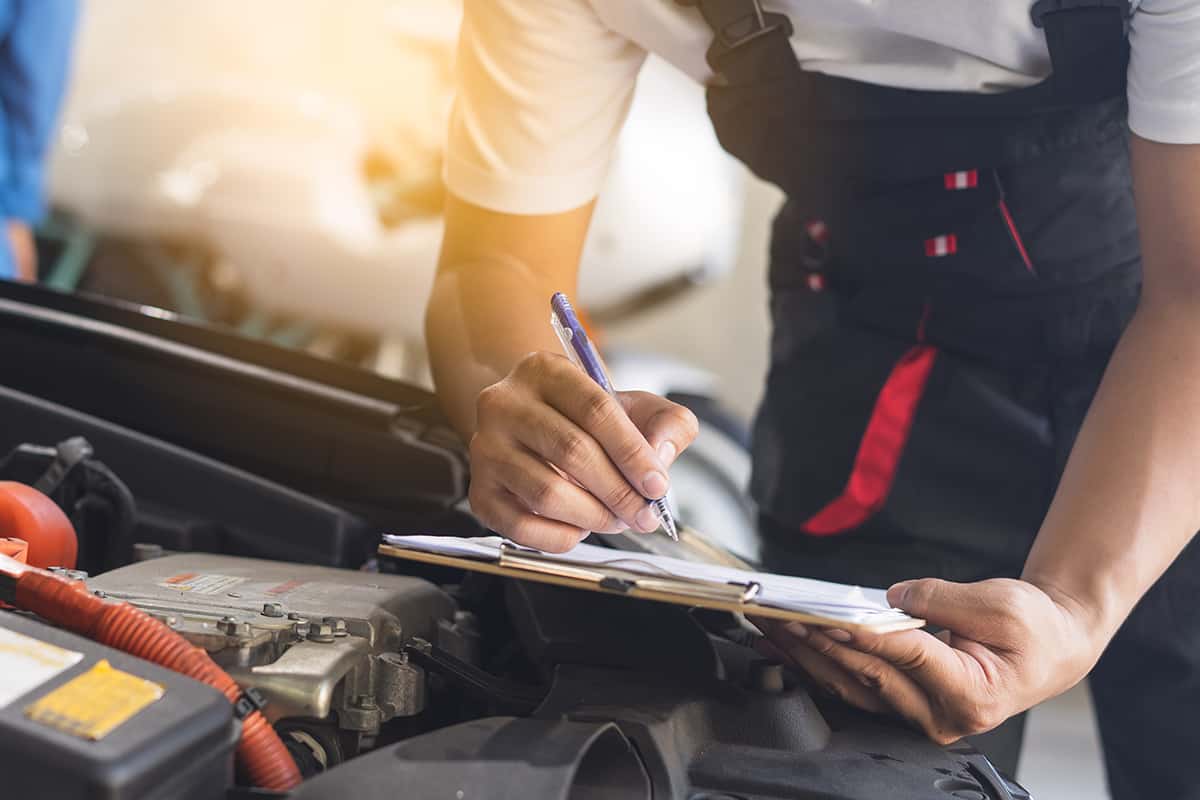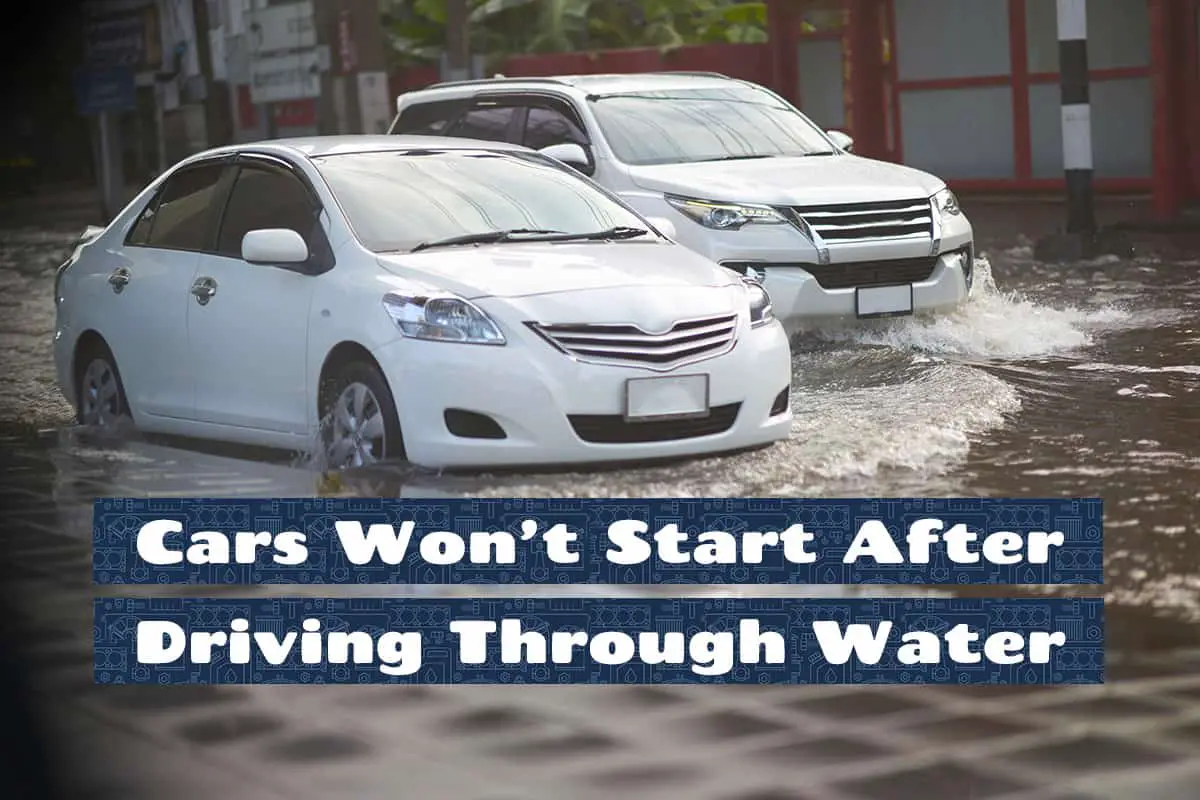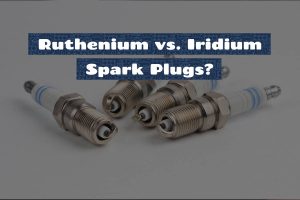Driving through water might seem like a harmless act, especially during rainy seasons or when encountering flooded areas. However, doing so can lead to several complications for your vehicle, such as starting problems. The worst of which is your car being unable to start at all!
There are several causes for why your vehicle wont’ starter after driving through water, such as:
- Engine Hydrolock
- Contaminated Spark Plugs
- Wet Electrical Components
- Blocked Air Intake
- Compromised Fuel System
- Damaged Catalytic Converter
- Moisture in the Distributor Cap
- Corroded Connectors and Fuses
In this guide, we’ll explore each of these issues in more detail, as well as provide a few handy tips for driving safely in the rain.
Causes of Why Car Doesn’t Start After Driving Through Water (and How to Fix It)
Water and cars can be adversaries. Sure, you use water to wash your car, but if it gets into any parts it’s not supposed to, it can lead to dire effects. One of those effects is your car not turning on. Let’s explore how water prevents your car’s engine from turning over in greater detail:
1. Engine Hydrolock
The engine operates by pulling in air, mixing it with fuel, and igniting it. If water replaces this air, especially in substantial quantities, the engine’s pistons cannot compress it. This situation is known as hydrolock.
When hydrolock occurs, the engine may refuse to crank or start, leaving you stranded. In severe cases, hydrolock can bend or break internal engine components.
Fix:
If you suspect hydrolock, do not attempt to start the engine repeatedly, as this can cause more damage. Instead, remove the spark plugs to release any trapped water. Once removed, you can try cranking the engine to expel water. Replace the spark plugs, and attempt to start the vehicle.
If it still doesn’t work or makes unusual sounds, seek professional help as internal components may be damaged.
2. Contaminated Spark Plugs
For a gasoline engine to function, spark plugs assist in igniting the fuel-air mixture. If water reaches the spark plugs, it can prevent them from creating the necessary spark. The fuel won’t ignite without this spark, and the engine won’t start.
Fix:
If spark plugs are wet, remove them and dry thoroughly. You can use compressed air or a clean cloth. Ensure the area around the spark plugs is free from water or debris before reinstallation. If the plugs look corroded or fouled, consider replacing them.
3. Wet Electrical Components
Cars have a plethora of electrical components, including sensors, circuits, and computers. When these components come into contact with water, it can cause short circuits or, at the least, hinder their normal function. For instance, if critical sensors related to the engine or transmission get wet and malfunction, the car’s computer might prevent starting as a protective measure.
Fix:
Dry off any visible water from electrical parts using a clean cloth or compressed air. If essential sensors or circuits have been submerged, you may need to disconnect the battery and removing the affected components to dry them. Ensure all connections are dry before reassembly. In cases of potential corrosion or doubt, consult with a mechanic.
4. Blocked Air Intake
For engines to operate efficiently, they need a constant supply of fresh air. Cars are designed with air intake systems positioned to draw in this air. Driving through deep water can sometimes cause these intakes to suck in water instead of air. If the engine’s air-to-fuel ratio is disrupted by water, it might immediately shut off or not turn over at all.
Fix:
Inspect the air intake for water or debris. If water is present, you might need to remove and empty the air filter box. Replace the air filter if it’s wet. Before starting the vehicle, ensure the intake path is clear.
5. Compromised Fuel System
Water intrusion into the fuel system can be disastrous. If water mixes with the fuel in the tank or lines, it can lead to poor combustion. Modern engines rely on precise measurements of fuel for optimal operation. When water dilutes this fuel, the engine might struggle to start or run unevenly.
Fix:
Water in the fuel system can be a challenge. To address this, drain the fuel tank and refill with fresh fuel. If contamination is suspected in the fuel lines or injectors, a fuel system cleaner can be added to the fresh tank of gas. If problems persist, professional fuel system cleaning might be required.
6. Damaged Catalytic Converter
The catalytic converter is responsible for reducing harmful emissions. Water entering the exhaust in large amounts and reaching the catalytic converter can cause rapid cooling and potential damage. A damaged or blocked catalytic converter can increase backpressure in the exhaust system and prevent the engine from starting.
Fix:
If there’s reason to believe water damage has affected the catalytic converter, you’d need to inspect it for blockages or physical damage. In most cases, a damaged catalytic converter will need replacement. This is a job best suited for professionals due to its complexity.
7. Moisture in the Distributor Cap
Older vehicles or certain models come equipped with a distributor system responsible for directing high-voltage electrical sparks to the spark plugs. When moisture infiltrates the distributor cap, it can disrupt the distribution of this spark, preventing the engine from starting.
Fix:
For vehicles with a distributor system, remove the distributor cap. Dry the inside thoroughly using a clean cloth or compressed air. Pay attention to the rotor and other internal components. Before reassembly, ensure no moisture remains.
8. Corroded Connectors and Fuses
While not an immediate after-effect, water exposure can lead to corrosion of electrical connectors, terminals, and fuses. This corrosion can disrupt the flow of electricity and hinder the operation of various vehicle systems, including those crucial for starting the engine.
Fix:
Inspect fuses and electrical connectors for signs of corrosion. If corrosion is spotted on fuses, replace them. For connectors showing early signs of corrosion, you can use electrical contact cleaner. If corrosion is severe, the connector might need replacement. Remember to disconnect the battery before working on electrical components.
Keeping Your Car Safe from Water Damage

Prevention is always better than the cure, which is why you should prepare your car in various ways to deal with rain and water damage.
1. Regular Inspections
Scan for rust spots or water entry points in your vehicle, especially after heavy rains. Ensuring door seals, windows, and sunroof are tightly sealed can prevent unwanted water intrusion. Periodically inspect undercarriage areas prone to rust, like exhaust systems and frames, and treat any spotted rust early.
2. Parking Wisely
Avoid parking in areas known for water pooling or flooding. If you reside in flood-prone zones, consider parking on an elevation or use protective barriers.
3. Proactive Maintenance
- Wax and Seal: Regularly waxing your car does more than just make it shiny. It provides a protective layer against moisture. Invest in good quality car wax, and don’t forget areas like the undercarriage.
- Undercoating: Consider undercoating or rust-proofing your vehicle. This treatment can defend the underbelly of your car from water damage and rust, especially in regions with heavy rainfall or snowy conditions.
- Replace Weather Stripping: Over time, weather stripping around doors and windows can degrade. Replacing them prevents water seepage inside the vehicle.
4. Drive Cautiously
you encounter a waterlogged road, assess its depth before advancing. Driving through deep water can harm your engine and other components. If you’re uncertain about the water’s depth, it’s safer to reroute or wait for the water to recede.
5. Emergency Preparedness
Equip your car with essentials that can assist during unexpected water encounters. This includes:
- Absorbent Towels: Handy for quickly drying off wet surfaces or tackling spills.
- Portable Air Compressor: Useful for blowing out water from electrical components or air intakes.
- Sealable Plastic Bags: Keep electronic items or documents protected from unexpected water exposure.






